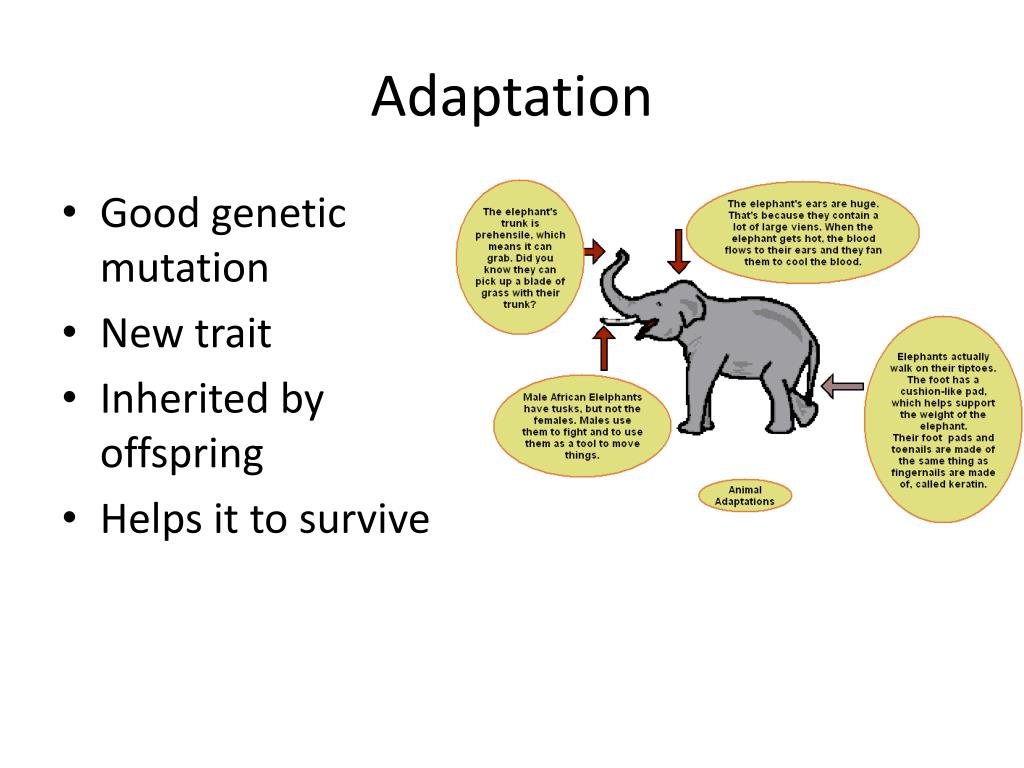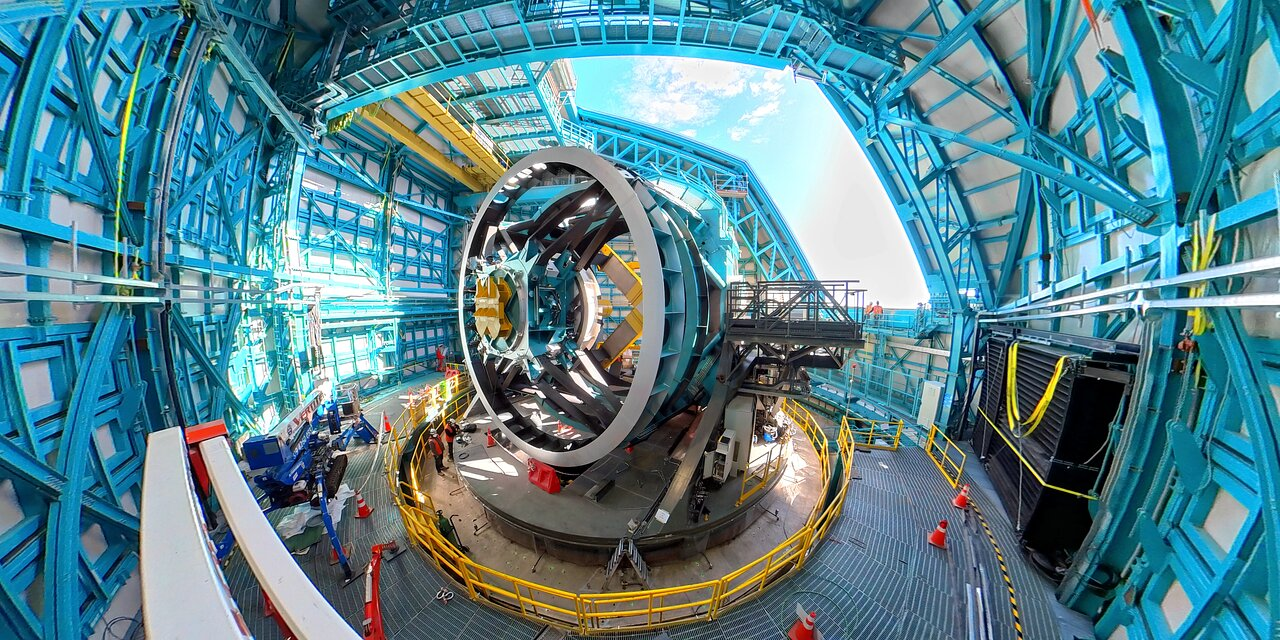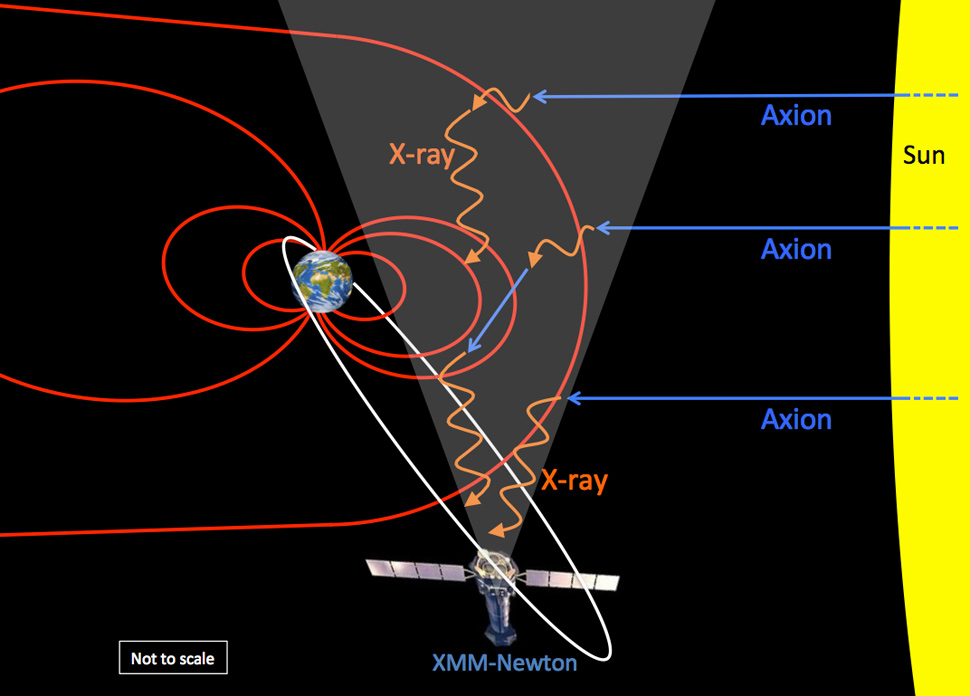The topological qubit is emerging as a groundbreaking innovation in the realm of quantum computing, particularly hailed for its potential to enhance the reliability and speed of quantum computers. Developed by a dedicated team at Microsoft, led by renowned researcher Chetan Nayak, this new qubit type demonstrates promise in addressing some of the crucial setbacks faced by traditional qubit systems. As ultrafast quantum computers become more integral to solving complex computational problems, the stability offered by topological qubits could unlock unprecedented capabilities in quantum error correction. By harnessing the unique properties of topologically ordered states, Microsoft aims to push the boundaries of what quantum mechanics can achieve, enabling more efficient processing of information. Such advancements not only position Microsoft at the forefront of technological innovation but also pave the way for a new era in computing that could redefine problem-solving in various fields.
In the evolving field of quantum mechanics, terms like the topological qubit represent a significant leap forward in the design and functionality of quantum bits. These revolutionary qubits, shaped by unique topological characteristics, offer improved robustness against environmental disturbances, which is a common challenge in conventional quantum systems. Chetan Nayak and his team at Microsoft have been instrumental in advancing this technology, which is poised to unlock the full potential of quantum machines. By developing systems that leverage topological properties, researchers aim to achieve a new level of fault tolerance in quantum computing. This progress is critical as it supports the development of ultrafast quantum computers, capable of rapid calculations that were previously thought to be unattainable.
The Emergence of the Topological Qubit in Quantum Computing
The advent of the topological qubit marks a significant milestone in the evolution of quantum computing. Unlike conventional qubits that rely heavily on fragile quantum states, the topological qubit is designed to harness the mathematics of topology for error correction. This innovative approach promises to create a more stable and reliable computing experience, essential for advancing ultrafast quantum computers. As developed by Microsoft’s Chetan Nayak and his team, this qubit forms a groundbreaking basis for future quantum systems that could tackle computations previously deemed impossible.
Moreover, the use of indium arsenide and aluminum in constructing the topological qubit adds a layer of robustness not found in traditional qubit designs. This special combination ensures that qubits can operate in a superconductor state at very low temperatures without succumbing to environmental perturbations that usually disrupt quantum systems. Hence, Microsoft’s topological qubit is not just a technical advance but a fundamental shift towards achieving greater scalability and persistence in quantum computations.
Challenges and Innovations in Quantum Error Correction
In the realm of quantum computing, error correction presents one of the most formidable challenges. Qubits are notoriously delicate; they are easily disturbed by their surroundings, which can lead to the loss of vital information and computational errors. Traditional quantum error correction techniques can be overly complex and resource-intensive, demanding extensive qubit resources that can hinder progress in quantum machine development. A more efficient solution is paramount for the realization of powerful, fault-tolerant quantum computers that can perform real-world tasks across various disciplines.
Bearing this in mind, the introduction of topological qubits represents a vital innovation in error correction. By allowing the quantum states to maintain their integrity through a hardware-level approach, researchers can significantly diminish the frequency and impact of errors. This mechanism not only enhances the stability of the qubits but also facilitates the pursuit of increasingly challenging quantum calculations without the implications of massive overhead. As the quantum community works diligently toward developing robust quantum systems, the integration of topological qubits will undoubtedly pave the way for the next generation of computing.
Transformative Potential of Ultrafast Quantum Computers
The development of ultrafast quantum computers has the potential to revolutionize various fields, from materials science to complex chemical simulations. Unlike classical supercomputers, which operate within the constraints of binary systems, ultrafast quantum computers leverage the unique properties of superposition, allowing them to perform multiple calculations simultaneously. This capability expands the horizons of problem-solving, enabling researchers to explore intricate quantum phenomena that were previously intractable.
Microsoft’s topological qubit significantly contributes to this transformative potential by offering a stable qubit design. Chetan Nayak and his team’s work heralds a new era in quantum computing where the challenges posed by environmental noise and qubit decoherence can be substantially mitigated. As researchers refine these systems and work towards a million-qubit quantum computer, the implications extend into numerous applications, including the development of pharmaceuticals, discovery of new materials, and addressing climate change challenges through advanced simulations.
The Role of Chetan Nayak in Quantum Computing Advancement
Chetan Nayak has emerged as a pivotal figure in the advancement of quantum computing, primarily through his work on topological qubits at Microsoft. His extensive background in physics, coupled with hands-on experience gained over nearly two decades, has thrust him into the forefront of developing innovative solutions that push the boundaries of current quantum technology. As a technical fellow and professor, Nayak brings both academic rigor and industrial expertise to his contributions, fostering collaboration between the realms of science and engineering.
Under Nayak’s leadership, Microsoft’s quantum research team has cultivated a conducive environment for innovation, focusing on solving critical challenges in quantum error correction and qubit stability. Nayak’s vision seeks to bridge the gap between theoretical underpinnings of quantum mechanics and practical applications, particularly in the emerging landscape of ultrafast quantum computers. His journey reflects a commitment to making groundbreaking advancements accessible and relevant, aiming for significant milestones in the quest for a robust quantum computing future.
The Future of Quantum Computing and Topological Qubits
Looking ahead, the future of quantum computing hinges on the successful integration and scaling of technologies based on topological qubits. As researchers push the boundaries of what is technologically feasible, the establishment of a million-qubit quantum computer becomes more attainable. This ambitious goal aligns with industrial interests and addresses real-world problems that classical supercomputers are unable to solve efficiently—such as complex drug discovery processes and optimization challenges in logistics.
The roadmap outlined by Microsoft underlines not only the technical ambitions but also the collaborative spirit of the quantum community, emphasizing partnerships with governmental agencies like DARPA. As quantum computing continues to mature, innovations such as topological qubits demonstrate the profound implications for scientific research and various industries, setting the stage for a new epoch of technological advancement that leverages the principles of quantum mechanics to transform our understanding and interaction with the universe.
Barriers to Implementing Topological Qubits
Despite the promising nature of topological qubits, there remain substantial barriers to implementing them on a large scale. One of the primary challenges is the intricate requirements for material purity and specific engineering techniques necessary to fabricate these qubits reliably. In comparison to traditional qubits, which might only require straightforward semiconductor materials, topological qubits demand an understanding of complex interactions between superconductors and other elements to create the desired topological states.
Moreover, scaling up from laboratory prototypes to practical devices involves addressing manufacturing inconsistencies and ensuring the reproducibility of qubit performance. This challenge is compounded by the need for ongoing research in quantum error correction methodologies, as error rates must be controlled effectively to utilize the full potential of topological qubits in quantum computing. As the collective efforts of researchers like Chetan Nayak continue, overcoming these barriers is essential for establishing a well-functioning quantum computing ecosystem.
Investing in Quantum Research and Development
Investment in quantum research and development has skyrocketed in recent years, recognizing the transformative potential of quantum technology. Companies like Microsoft, Google, and various startups are mobilizing financial resources not only to explore the theoretical aspects of quantum mechanics but also to bring practical applications to fruition. The advancements in topological qubits are a direct outcome of this intensive focus on developing technologies capable of leveraging quantum principles for real-world problem solving.
As funding and interest in quantum computing grow, it is crucial to align these investments with educational initiatives that can foster the next generation of quantum scientists and engineers. Programs that bridge academia and industry ensure a steady influx of talent equipped to navigate the complexities of quantum technology. Ongoing collaborations between research institutions and tech companies will help disseminate knowledge and spur innovation in a field that promises to redefine computation, efficiency, and problem-solving capabilities.
The Intersection of Theory and Practical Application
The intersection of theoretical frameworks and practical applications is where the true potential of quantum computing lies. As researchers delve into the intricacies of quantum physics, the designs of topological qubits exemplify how abstract theories become reality through rigorous research and development. This process highlights the importance of continual refinement of theoretical models and empirical testing to achieve viable quantum technologies that can function effectively in real-world scenarios.
In many ways, the advances in topological qubits mirror the journey of classical computing, where theoretical concepts needed to be adapted and reimagined into hardware and software solutions. As Chetan Nayak and his team at Microsoft demonstrate, this ongoing dialogue between abstract science and tangible technology remains vital to the progress of quantum computing. Success in this space requires collaborative efforts across disciplines, integrating insights from physics, engineering, and computer science to unlock the full capabilities of these powerful computational tools.
The Broader Impact of Quantum Innovations
The innovations emerging from the field of quantum computing, particularly those involving topological qubits, possess far-reaching implications that extend beyond the confines of academic research. The capability of ultrafast quantum computers has the potential to catalyze transformative changes in industries such as pharmaceuticals, materials science, and artificial intelligence. By enabling unprecedented simulation capacities and complex problem-solving, these advancements will foster innovations that can lead to significant societal benefits, including breakthroughs in medical research and sustainable technology development.
Moreover, as the quantum computing landscape evolves, it necessitates an ethical and societal consideration of the technology’s impacts. The power to solve vast computational challenges should be tempered with discussions around data privacy, security, and the digital divide that could arise from unequal access to such transformative technologies. Engaging in these conversations alongside the inherent excitement of quantum innovations ensures that the contributions of topological qubits and other technologies are harnessed for the greater good, promoting equitable advancements that benefit all.
Frequently Asked Questions
What is a topological qubit and how does it relate to quantum computing?
A topological qubit is an innovative type of qubit that leverages topological properties to improve the stability and performance of quantum computations. Unlike traditional qubits, which are susceptible to errors due to environmental interactions, topological qubits maintain their quantum state longer and require less quantum error correction. This enhances the reliability of quantum computing, making it a promising development by companies like Microsoft.
How do topological qubits compare to regular qubits in terms of stability?
Topological qubits significantly outperform regular qubits in terms of stability. While traditional qubits can lose their state due to environmental fluctuations, topological qubits are designed to resist such disturbances by using their topological structure. This means that they can maintain a coherent quantum state longer, reducing the need for frequent quantum error correction and making them ideal for creating robust ultrafast quantum computers.
What role does Chetan Nayak play in the development of topological qubits?
Chetan Nayak is a leading figure in the development of topological qubits, serving as a Microsoft technical fellow and a professor at UC Santa Barbara. His extensive research and leadership have been pivotal in advancing the understanding of topological materials and their application in quantum computing, aiming to create more reliable systems for ultrafast quantum calculations.
How might topological qubits accelerate the development of ultrafast quantum computers?
Topological qubits could significantly accelerate the development of ultrafast quantum computers by providing a more stable framework for quantum computation. Their inherent resistance to error allows for more complex calculations to be performed efficiently, addressing previously unsolvable problems in materials science and chemistry, ultimately pushing the boundaries of what quantum computing can achieve.
What are the challenges associated with developing topological qubits?
The development of topological qubits faces challenges such as material selection and the engineering of hybrid systems that combine superconducting and semiconductor properties. Researchers must also find effective ways to simulate and test the interactions within these systems to ensure that they achieve the required stability and performance for practical quantum computing applications.
What advancements have been made towards creating a million-qubit quantum computer using topological qubits?
Recent advancements in the field have focused on scaling up the number of functional qubits. While current implementations have only demonstrated a few qubits, the roadmap developed by Microsoft outlines a pathway towards achieving a million-qubit quantum computer, utilizing the unique properties of topological qubits to achieve fault-tolerance and reliable computations.
Why is quantum error correction important in the context of topological qubits?
Quantum error correction is crucial as it addresses the inherent fragility of qubits, which can lose coherence and information due to environmental factors. Topological qubits, however, minimize these concerns by maintaining stability at the hardware level, reducing the frequency and complexity of required quantum error correction methods, which is essential for building scalable quantum computers.
How could topological qubits impact future materials science and chemistry research?
The introduction of topological qubits into quantum computing could revolutionize materials science and chemistry research by enabling precise simulations of complex materials and reactions. This could lead to breakthroughs in discovering new materials, optimizing chemical processes, and developing efficient solutions to global challenges, such as sustainable energy and advanced pharmaceuticals.
| Key Points | Details |
|---|---|
| Development of Topological Qubits | Microsoft claims that its topological qubit offers a more stable and reliable alternative compared to conventional qubits, making them suitable for quantum computers. |
| Benefits of Topological Qubits | These qubits are believed to improve error correction and stability, enabling quantum computers to effectively solve complex problems beyond the capabilities of traditional supercomputers. |
| Superconducting Properties | Topological qubits are composed of indium arsenide and aluminum, functioning as superconductors at extremely low temperatures. |
| Challenges in Development | Developing these qubits has required extensive research and overcoming issues related to material properties and quantum state preservation. |
| Aiming for a Million Qubits | Microsoft’s roadmap targets the development of a million-qubit quantum computer to solve significant scientific problems. |
Summary
Topological qubits are poised to revolutionize quantum computing, providing increased stability and error correction over traditional qubit designs. This innovative technology developed by Microsoft is expected to lead to ultrafast quantum computers capable of tackling complex problems that were previously insurmountable. As research progresses, the implications for fields such as materials science and chemistry could be transformative, marking a significant step forward in the evolution of quantum technology.




